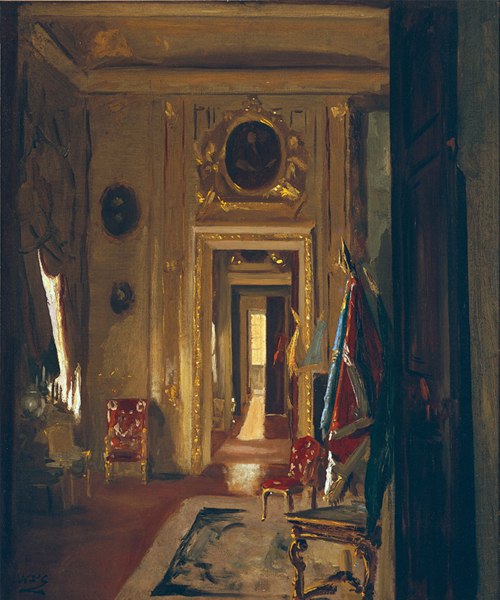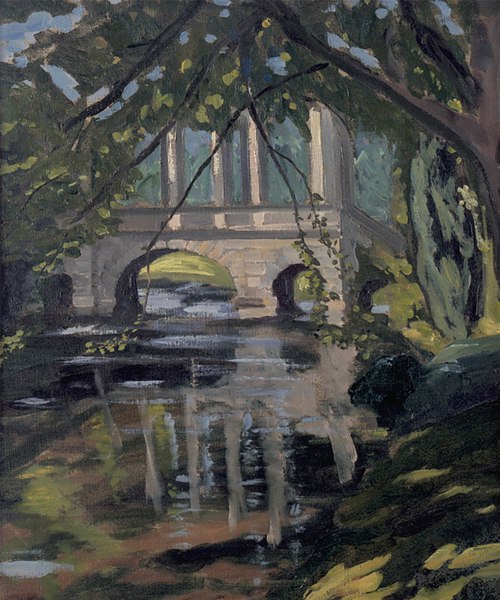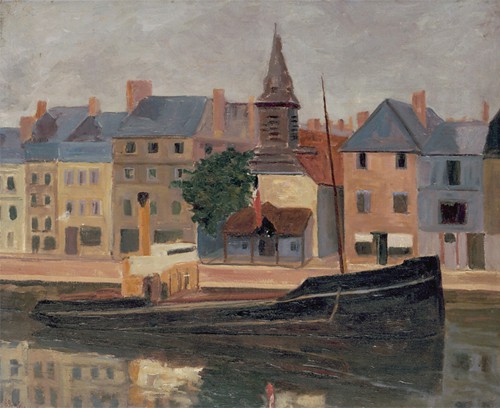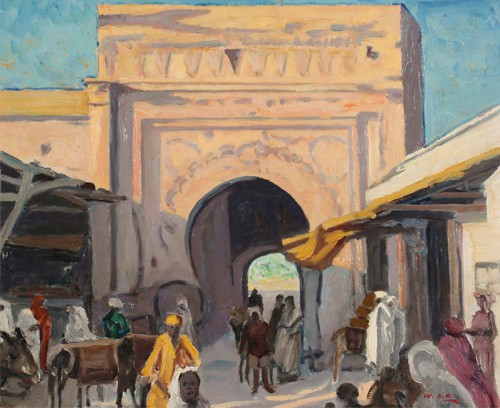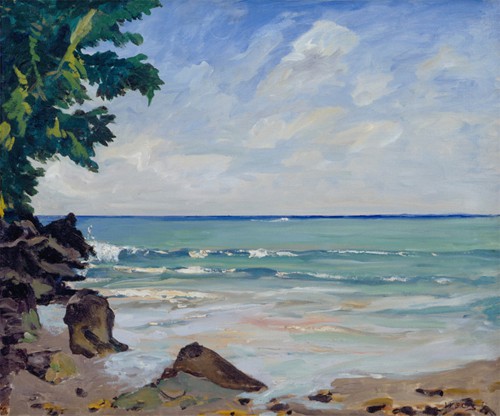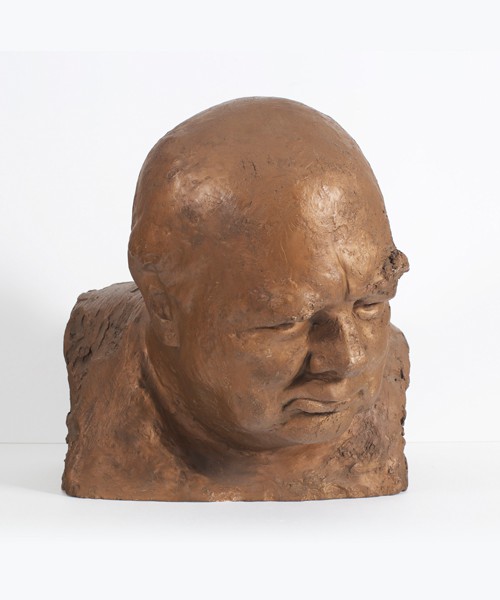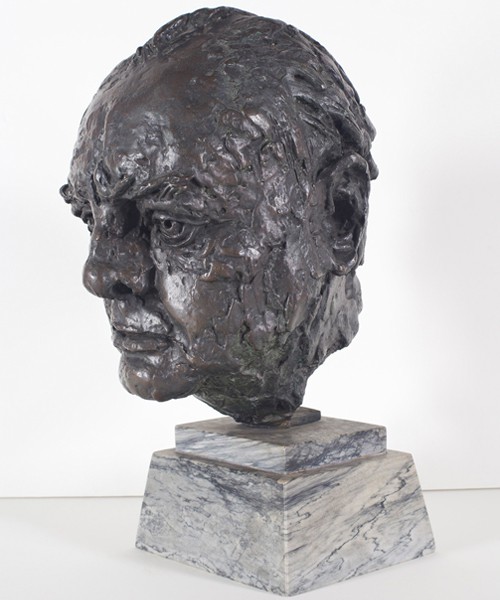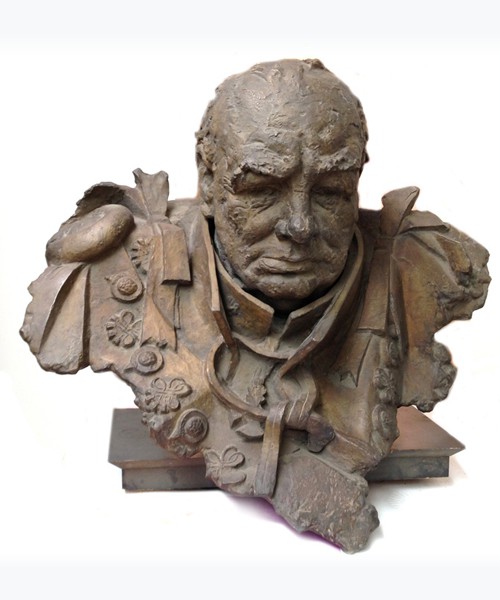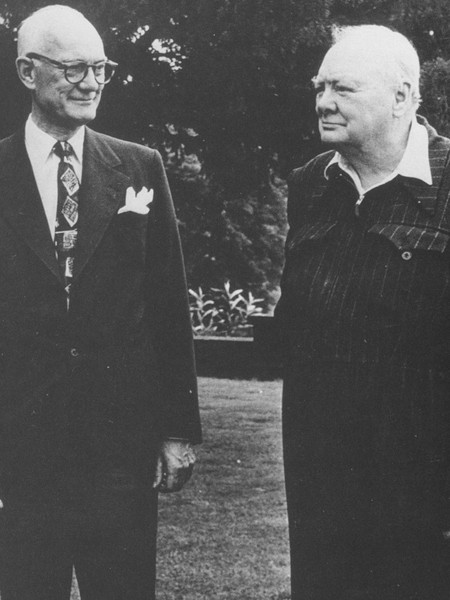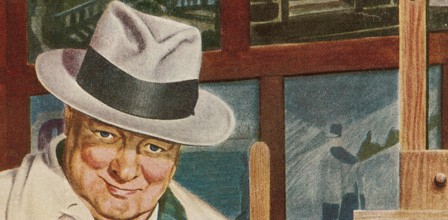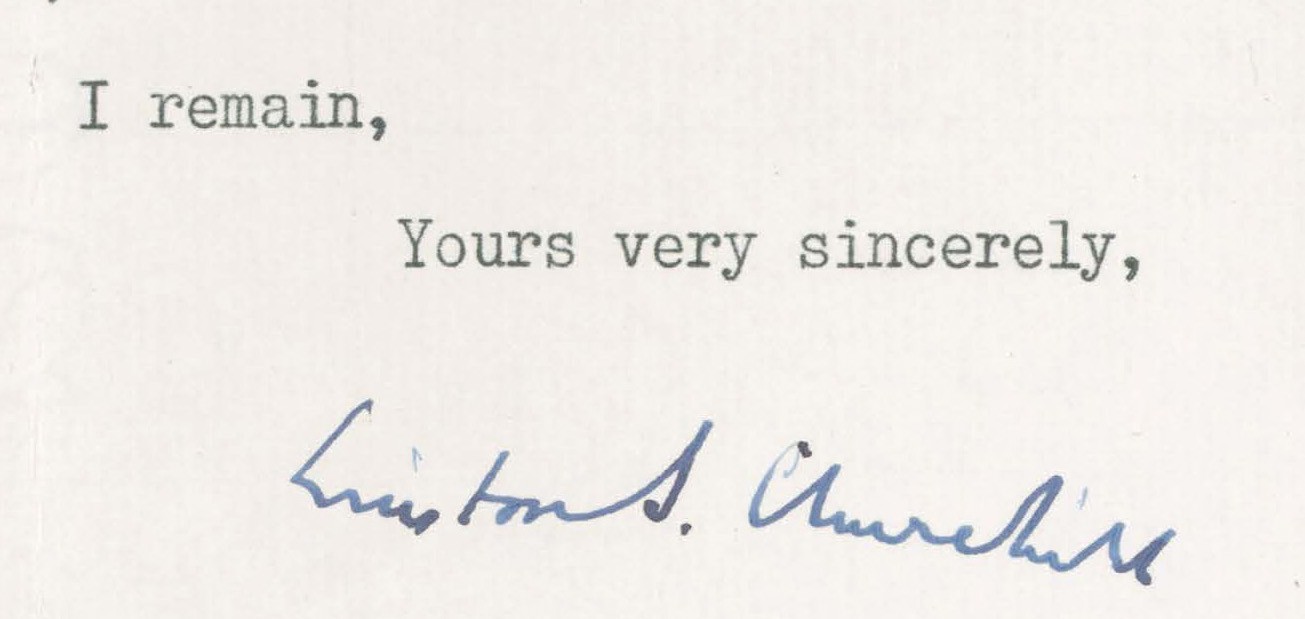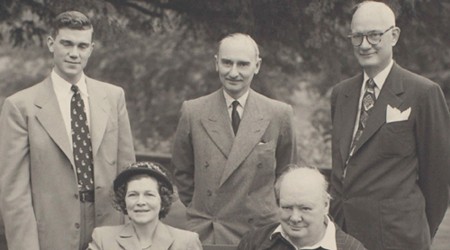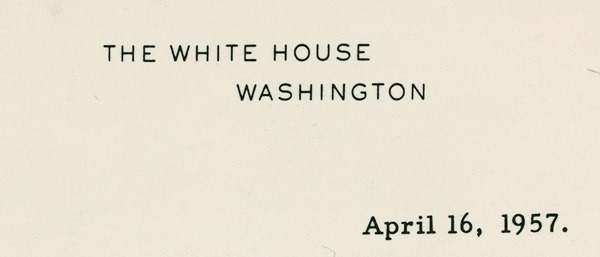Stories Behind
the Art
Winston
Churchillpainter
Sir Winston Churchill is best known as an influential statesman and inspirational leader of the British people during World War II. However, later in life he also garnered praise for his art, largely through the promotional efforts of Joyce C. Hall and Hallmark Cards. Although Churchill often referred to it as a hobby, painting proved to be more than just a casual pastime.
Largely self-taught, Churchill took up painting in 1915 during a hiatus from military service following a disastrous military campaign at Gallipoli (in modern-day Turkey). Throughout his lifetime he again turned to painting for renewal and consolation. It helped to tame his recurring depression, which he nicknamed his “Black Dog.” Art also prompted his numerous travels, which served as both painting expeditions and respite from the heavy burden of his official duties.
Churchill was always modest about his art, but J.C. Hall persuaded him to share his paintings with the public on Hallmark Greeting cards beginning in 1950. A fruitful relationship with Hallmark ensued, leading to Churchill’s first major exhibition, which was initiated by J.C. Hall in 1957. Winston Churchill, The Painter traveled to museums around the United States, breaking attendance records wherever it was shown. His life as an artist was later chronicled in Hallmark Hall of Fame’s The Other World of Winston Churchill, broadcast on his 90th birthday in 1964.
Churchill’s Greeting Cards
Hallmark Cards founder J.C. Hall first met Winston Churchill in Fulton, Missouri in 1946, when the statesman delivered his rousing “Iron Curtain” speech. Three years later Hall sought to secure the rights to reproduce his paintings on greeting cards, despite Churchill’s modesty about his art. When his lawyers presented the offer from Hallmark, Churchill quickly responded: “That’s a good firm. Make a deal with them!”
In the winter of 1950 the first boxed set of Churchill cards received four and a half million pre-orders from stores, far exceeding the company’s expectations. This was followed in successive years by further cards, calendars, and prints featuring beloved Churchill landscape and still life paintings.
Through Hallmark’s promotion Churchill soon gained distinction as “the world’s most noted hobby painter.” A friendship between J.C. Hall and Winston Churchill also grew over the years. In 1954 Churchill expressed his gratitude for their friendship by making a rare gift of Frankfurt Beach, Jamaica to J.C. Hall. Their friendship lasted until the artist’s death in 1965. Shortly thereafter, J.C. acquired four more canvases. At the time, these five were the largest collection of Churchill paintings outside the artist’s own family. The paintings are now a part of the historic Hallmark Art Collection.
The Other World of Winston Churchill
The Eisenhower Connection
Dwight D. Eisenhower, the 34th President of the United States, grew up in Abilene, Kansas, 150 miles west of Kansas City, and maintained close ties to the area throughout his life. J.C. Hall met then-general Eisenhower in 1950, and a lifelong friendship ensued. J.C. was invited to join the board of a new museum in Abilene to be dedicated to Eisenhower. It was at the ground breaking ceremony in 1952 that the general announced his candidacy for president.
Once President Eisenhower was in office, Hallmark was entrusted to create personal greetings for the first couple as well as the official White House Christmas Cards, a tradition that continued with many subsequent U.S. presidents. A number of the cards and commemorative prints created for the Eisenhower administration were adorned with the president’s own paintings.
Inspired by the example of his friend Winston Churchill, Eisenhower began painting after the war, a pastime that remained with him throughout his life. In a letter to Churchill he noted “I have had a lot of fun since I took it up, in some miserable way, your hobby of painting.” Eisenhower painted landscapes and portraits, including those of past presidents Washington and Lincoln. He also painted a portrait of Churchill which he gifted to the elder statesman.
When J.C. Hall proposed a traveling exhibition of Sir Winston Churchill’s art, President Eisenhower made a personal appeal to Churchill. In his persuasive letter of 1957, he noted “the tremendous affection that the American people feel for you.” The following year Winston Churchill: The Painter debuted at the Nelson Gallery of Art in Kansas City (now the Nelson-Atkins Museum of Art) and broke museum attendance records nationwide.
In his foreword to the exhibition catalogue Eisenhower wrote “I may perhaps be excused in thinking so warmly of Sir Winston’s painting both because I have been so devoted to him as a friend and because of the opportunities I have had during the past fifteen years to see so many of the remarkable products of his hobby.”
